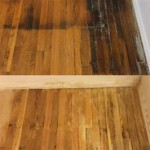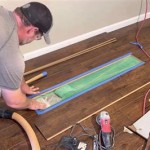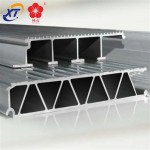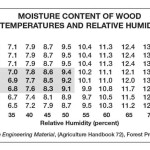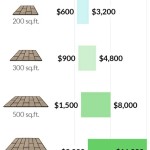Can I Use A Nail Gun To Install Hardwood Floors?
The installation of hardwood flooring represents a significant home improvement project, enhancing both the aesthetic appeal and the overall value of a property. A crucial aspect of hardwood floor installation involves securing the planks to the subfloor. While traditional methods often involve manual nailing, the advent of nail guns has presented a potential alternative, raising the question of their suitability and effectiveness for this task.
Understanding the nuances of hardwood floor installation and the specific requirements for fastening is paramount before considering the use of a nail gun. Different types of hardwood, subfloors, and installation techniques can influence the choice of fastening methods. This article delves into the intricacies of utilizing nail guns for hardwood floor installation, addressing potential benefits, drawbacks, and best practices.
Understanding Nail Guns and Their Types
Nail guns, also known as nailers, are power tools designed to drive nails into various materials efficiently. They utilize compressed air, electricity, or combustion to propel fasteners, significantly reducing the time and effort compared to manual hammering. However, not all nail guns are created equal. Several types cater to different applications, each possessing unique features and capabilities.
Framing nailers, for instance, are typically used for structural work, such as framing walls and building decks. They accommodate larger nails and offer high power, making them unsuitable for the delicate task of hardwood floor installation. Roofing nailers, designed for installing roofing materials, are equally inappropriate due to their specialized nail specifications and potential for damage.
For hardwood floor installation, specific types of nail guns are recommended: flooring nailers and flooring staplers. These tools are engineered to drive fasteners at the correct angle and depth without damaging the wood's surface. Flooring nailers use cleats, which are specialized nails with a grooved shank designed to grip the wood fibers securely. Flooring staplers, on the other hand, employ staples, offering an alternative fastening method. The choice between a nailer and a stapler often depends on personal preference, the type of hardwood being installed, and the manufacturer's recommendations.
Both flooring nailers and staplers typically feature a footplate that rests on the flooring plank, ensuring consistent nail or staple placement. They also have a mechanism that allows the user to adjust the depth of the fastener, preventing over-driving, which can mar the surface of the hardwood. Some models are manually operated, requiring the user to strike the head of the nailer with a mallet, while others are pneumatic, powered by compressed air.
The accuracy and control offered by flooring nailers and staplers are crucial for achieving a professional-looking installation. Unlike general-purpose nail guns, these tools are designed specifically for the demands of hardwood flooring, minimizing the risk of splitting, cracking, or otherwise damaging the planks.
Benefits of Using Nail Guns for Hardwood Floor Installation
The primary advantage of using a nail gun for hardwood floor installation is increased efficiency. Compared to manual nailing, a nail gun can significantly reduce the time and effort required to fasten the planks to the subfloor. This is particularly beneficial for large installations where the sheer volume of nails can become physically demanding.
Another benefit lies in the consistency of nail placement. A flooring nailer or stapler ensures that each fastener is driven at the correct angle and depth, resulting in a more uniform and secure installation. Manual nailing can be prone to inconsistencies, potentially leading to loose planks or uneven surfaces.
Furthermore, nail guns can help minimize damage to the hardwood. By controlling the depth of the fastener, the risk of over-driving and marring the surface is reduced. This is especially important for pre-finished hardwood floors where surface imperfections are more noticeable.
From an ergonomic perspective, nail guns can also reduce strain on the installer. The repetitive motion of hammering can lead to fatigue and potential injuries, particularly in the wrists and arms. A nail gun eliminates the need for manual hammering, reducing physical strain and improving overall comfort throughout the installation process.
The precision offered by flooring nailers and staplers also contributes to the overall quality of the installation. Consistent and properly driven fasteners ensure that the planks are securely attached to the subfloor, minimizing the risk of movement and squeaking over time. This results in a more durable and long-lasting hardwood floor.
Potential Drawbacks and How to Mitigate Them
While nail guns offer numerous advantages, they also present potential drawbacks that must be considered. One of the primary concerns is the cost of the tool itself. Flooring nailers and staplers can be relatively expensive, representing a significant upfront investment. However, for frequent or professional installers, the increased efficiency and quality of the installation may justify the cost.
Another potential drawback is the learning curve associated with using a nail gun. While the operation is generally straightforward, it requires practice and attention to detail to ensure proper fastener placement and depth. Incorrect use can lead to damage to the hardwood or an insecure installation. It is always recommended to practice on scrap pieces of wood before beginning the actual installation.
The air compressor required for pneumatic nail guns can also be a source of noise and inconvenience. The compressor needs to be positioned close enough to the work area to ensure sufficient air pressure, which can be disruptive in a residential setting. Electric nail guns offer a quieter alternative, but they may not provide the same level of power as pneumatic models.
Another potential issue is the risk of splitting or cracking the hardwood, particularly when working with denser or more brittle species. To mitigate this risk, it is crucial to select the appropriate fastener size and type for the specific hardwood being installed. Pre-drilling pilot holes may also be necessary in some cases.
Dust and debris generated during the installation process can also pose a challenge. Nail guns can create fine dust particles that can irritate the respiratory system. It is essential to wear appropriate personal protective equipment, such as a dust mask or respirator, and to ventilate the work area adequately.
To minimize these drawbacks, thorough planning and preparation are essential. Researching the specific requirements of the hardwood being installed, selecting the appropriate nail gun and fasteners, and practicing proper technique can help ensure a successful and trouble-free installation.
Ultimately, the decision to use a nail gun for hardwood floor installation should be based on a careful assessment of the benefits and drawbacks, as well as the installer's experience and skill level. While nail guns offer significant advantages in terms of efficiency and consistency, they also require proper knowledge and technique to avoid potential problems. By understanding the nuances of hardwood floor installation and taking appropriate precautions, it is possible to achieve a beautiful and durable result.

Is Nail Down Installation The Best Unique Wood Floor

Hardwood Floor Installation Nail Down Like A Pro

Engineered Hardwood Floors Installation Floor Refinishing New Jersey Repair Sanding

Hardwood Floor Installation Nail Down Like A Pro

Engineered Hardwood Floor Install Top Pro Tips

Choosing The Best Nailer For Hardwood Floor Installation Flooring Nailers Reallyfloors America S Est

Installing Hardwood Floors Sand And Sisal

How To Install Hardwood Flooring Young House Love

How To Install Hardwood Floors 8 Steps With S Instructables

Dewalt 20v Max Cordless Flooring Stapler Unleashed Pro Tool Reviews
Related Posts

